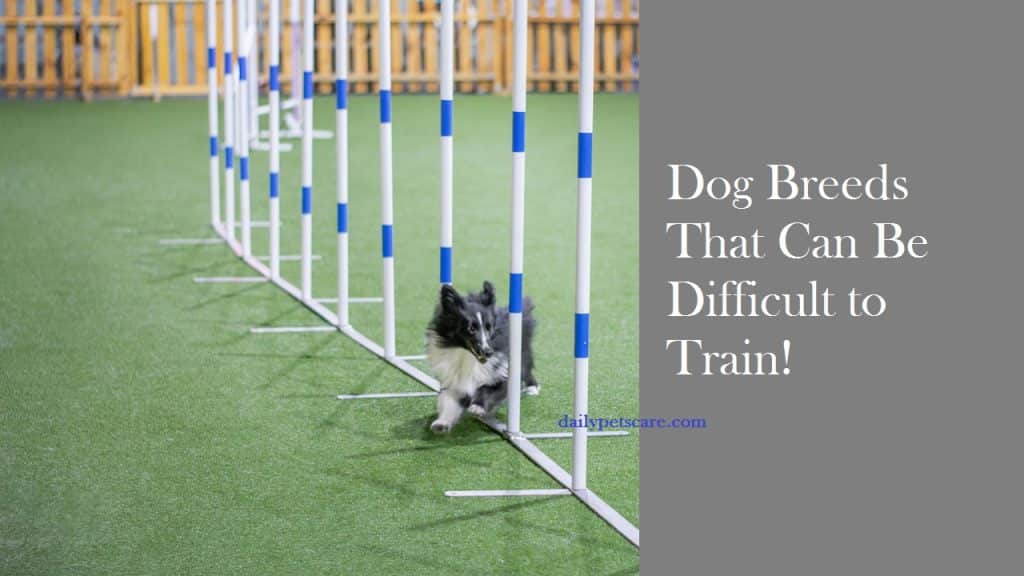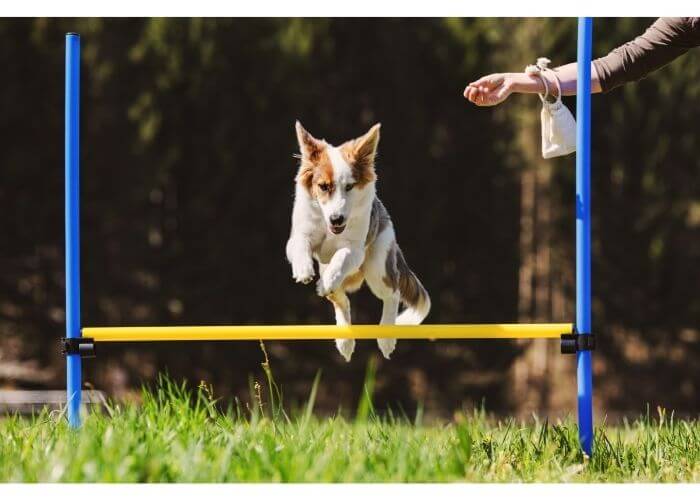Are you tired of feeling like you're barking up the wrong tree with your dog's training? You're not alone! Some dog breeds bring their own set of challenges to the obedience table. But fear not! With patience and persistence, you can master training even the most stubborn breeds.
So, which are these dog breeds that can be difficult to train?
Some dogs, like Afghan Hounds, Basenjis, Bulldogs, Chow Chows, and Shiba Inus, can be hard to train. They have their minds and might not listen well to what you say.
In this guide, we'll unravel the complexities of training certain dog breeds known for their independent streaks and stubborn tendencies.
Ready? Let's begin.
Dog Breeds That Can Be Difficult to Train
Some dogs are more challenging to train because they are stubborn or do their own thing. Even though they can be difficult, with patience and effort, they can still learn.
Here are some of those dogs:
- Afghan Hound
- Basenji
- Bulldog
- Chow Chow
- Shiba Inu
- Rottweilers
- Beagle
- Chinese Shar-Pei
- Siberian Huskies
- Basset Hound
Read on.
Afghan Hound
With their graceful looks, Afghan Hounds can be quite challenging to train. Plus, they're independent and often prefer chasing over listening.
Training them requires patience and using treats or rewards to encourage good behavior.
Basenji
Basenjis are special dogs because they like doing their own thing. They may not always listen to commands because they're more interested in chasing things.
Teaching them requires patience and doing the same thing regularly. Using treats can also help them learn better.
Bulldog
A common breed, Bulldogs are affectionate and enjoyable but also quite stubborn.
You might believe they spend all their time eating, napping, and eating again, which makes them seem easygoing.
However, their laid-back attitude often means they're not keen on listening to commands.
While you can teach them, it will probably take more effort than with other breeds since Bulldogs are less active.
Chow Chow
Training a Chow Chow to act correctly can be challenging for pet owners. This breed is famous for being bossy and not easily swayed.
They tend to be unfriendly, especially to other animals and people they don't know.
Chow Chows also tend to be possessive and want lots of love and care from their owners and families.
Shiba Inu
Shiba Inus may be tiny, but they have a lot of character. They're famous for being determined and sometimes easy to teach.
Training them needs a steady and firm method from the start.
They like being praised for good behavior but need someone who can wait and keep trying.
Rottweilers
When you first see a Rottweiler, their size might scare you. Even though they're beautiful dogs, they can seem pretty intimidating.
But, despite that tough look, they're some of the most faithful dogs. But if they don't get the proper training, Rottweilers might become too protective of their family. They could snap at others without any real reason.
Furthermore, they might be stubborn when playing and growl when disagreeing. Plus, sometimes, they only listen to their owner.
Beagle
Beagles are cute and enjoyable, but teaching them can be challenging. Their energy makes it hard for them to focus and follow directions.
Plus, they love to bark, which can be a hassle for pet owners and neighbors.
Overall, they might gain weight too quickly, so they need to exercise more.
Chinese Shar-Pei
At first glance, Chinese Shar-Peis seem like cuddly dogs you'd love to train. Nonetheless, they need to be more known for not being very friendly and need help socializing.
Making friends isn't their strong point, whether with other animals or people.
They're a bit territorial, making it challenging to get along with other pets, visitors, or people they don't know.
While they usually bond well with their owners, Chinese Shar-Peis typically don't warm up to anyone else.
Siberian Huskies
Though huskies are stunning, they come with their challenges. Siberian Huskies are energetic, especially when young, and need consistent training.
Since they're working dogs, they need something to do to stay happy.
When bored, they might cause trouble, which can be challenging for their owners. Having another dog around can sometimes help, but it might make things trickier.
Basset Hound
Basset Hounds are famously hard to potty train, frustrating owners and their families.
Learning to potty train them takes longer than other breeds, which adds to the annoyance.
Plus, they'll sniff around everywhere, ignoring what you tell them. Even though it's irritating, they can't help but follow their nose.
While they like getting rewards for good behavior, their habits are hard to change no matter what you try.
Personality Traits Affecting Dog Breeds Training
All dogs are lovely, but some breeds may need extra patience and effort regarding training.
Moreover, many training challenges stem from a breed's history and tasks.
Here are some of the personality traits affecting dog breeds training:
High Energy/Working Dogs: In the past, dogs had important jobs like herding or pulling. It means the people bred them to have lots of energy and strength.
Even though dogs mostly live as companions nowadays, that energy is still part of their nature.
These breeds can become destructive or noisy when bored without enough exercise or mental stimulation.
Independence: While dogs are usually social animals, some breeds have a strong independent streak.
They might prefer to be the only pets in the household or have their own way of doing things.
Without proper training, they may become aggressive or set their own rules.
Intelligence: Smart breeds tend to think for themselves and can be stubborn. They might decide when to follow commands or explore things they shouldn't.
They need consistent training to keep them from getting into trouble.
Sensitivity: Some breeds are sensitive to their environment and owners' emotions. They may need gentle training to avoid feeling anxious.
Various Methods of Training Dogs
Various methods exist for training and guiding dogs, each offering unique approaches.
Large Size: Big breeds can be challenging, especially on a leash. They may be aware of their size compared to yours and resist following orders.
Building a respectful relationship with these dogs is vital for successful training.
Basic Puppy Training: This involves teaching puppies simple and more advanced skills such as sitting, staying, settling on a mat, walking nicely on a leash, coming when called, leaving desirable items, dropping items, and staying calm when excited, even with distractions around.
Positive Reinforcement: This method, or reward-based training, uses treats or toys to motivate dogs to do what we ask.
It's popular with trainers because it works well for all types of dogs, even the difficult ones.
Always give the dog something they enjoy, like treats or praise, as a reward for doing things correctly.
Behavioral: Behavioral training helps us and our puppies understand each other better.
We teach puppies what we expect by rewarding good behavior and using clear signals.
It builds trust and cooperation between us and our furry friends.
Clicker: Clicker training is when we use a clicker tool to show the dog they did something right.
It helps us tell our dogs exactly when they're doing well, making training clearer and more accurate.
Science-based: In science-based training, trainers use methods that research has proven.
They keep learning about how dogs think and behave and change how they train dogs based on what science shows works best.
Relationship-Based Training: This method builds a strong bond between dogs and their owners. It's all about communication, trust, and respect.
Observing the dog's behavior and adjusting training methods creates a positive connection.
FAQs
What Age Is a Dog Hardest to Train?
Training a dog can be hard when it's a teenager, usually between six months and two years old.
During this time, dogs undergo significant changes as they grow from puppies into adults.
Their hormones can make them moody and full of energy, making it hard for them to sit still and pay attention.
Teenage dogs might also start testing their limits, wanting to do things their way, and being stubborn.
It's harder for them to focus during training sessions because they get easily distracted.
But even though it's tough, consistent training, patience, and giving them rewards for good behavior are still necessary.
Owners must be transparent with their dogs, setting firm rules and sticking to them. Keeping a routine can also help guide teenage dogs through this stage.
Even though it can be frustrating, staying calm and not giving up on training can make a big difference.
With time and understanding, owners can help their teenage dogs learn and grow into well-behaved adults.
Conclusion
Some dogs can be challenging to train because they focus on other things, like guarding or following scents. Others prefer playing over learning.
Even though it can be frustrating when your dog doesn't listen, stay positive and keep trying.
Training your dog is vital for safety and makes owning a pet more enjoyable.
If you're having trouble, it's okay to ask for help from a professional. They have lots of experience with difficult dogs and can often help more quickly. Plus, they might give you valuable tips for training your specific pet.


